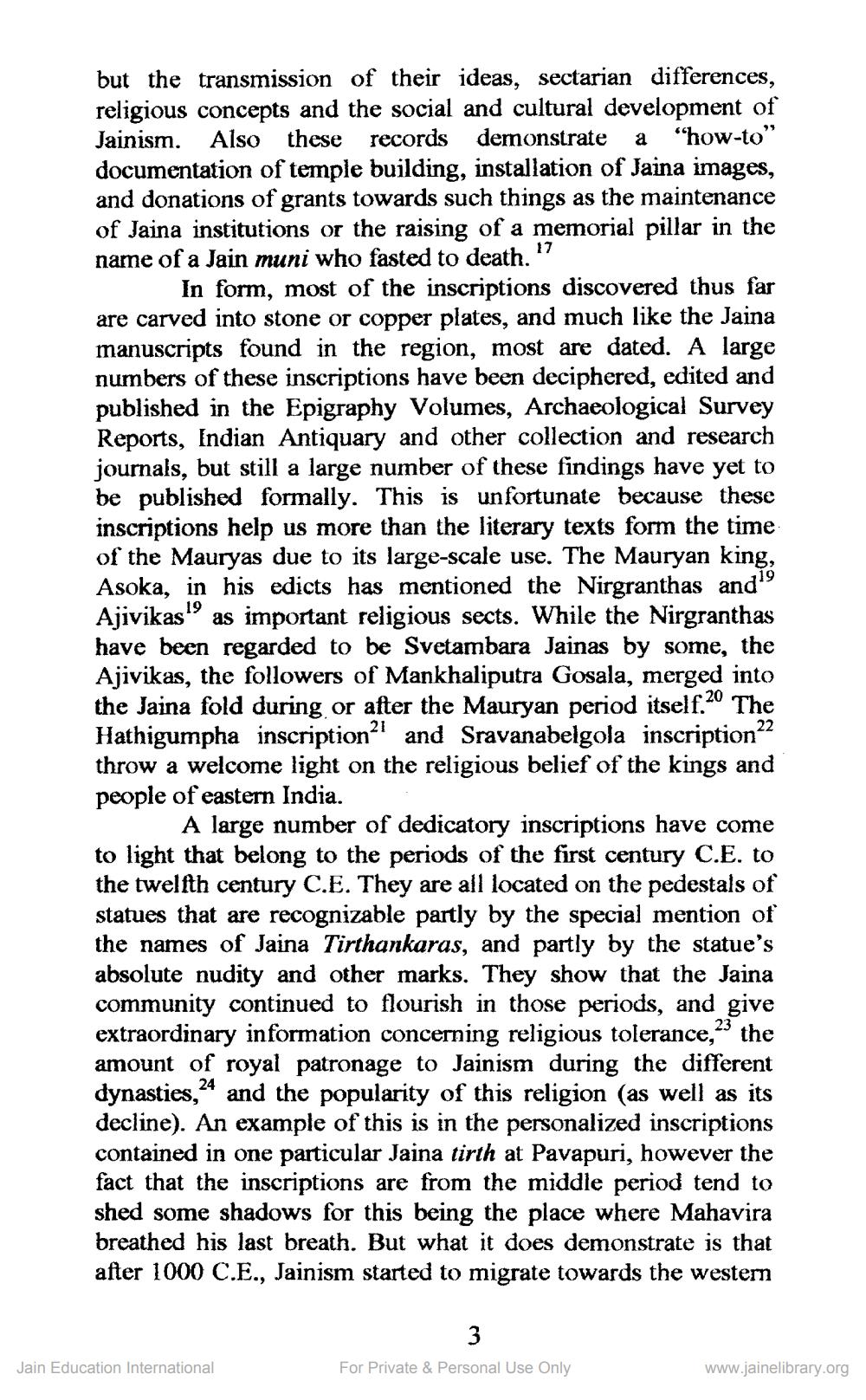Book Title: Jinamanjari 2001 09 No 24 Author(s): Jinamanjari Publisher: Canada Bramhi Jain Society Publication View full book textPage 7
________________ but the transmission of their ideas, sectarian differences, religious concepts and the social and cultural development of Jainism. Also these records demonstrate a "how-to" documentation of temple building, installation of Jaina images, and donations of grants towards such things as the maintenance of Jaina institutions or the raising of a memorial pillar in the name of a Jain muni who fasted to death." In form, most of the inscriptions discovered thus far are carved into stone or copper plates, and much like the Jaina manuscripts found in the region, most are dated. A large numbers of these inscriptions have been deciphered, edited and published in the Epigraphy Volumes, Archaeological Survey Reports, Indian Antiquary and other collection and research journals, but still a large number of these findings have yet to be published formally. This is unfortunate because these inscriptions help us more than the literary texts form the time of the Mauryas due to its large-scale use. The Mauryan king, Asoka, in his edicts has mentioned the Nirgranthas and" Ajivikas" as important religious sects. While the Nirgranthas have been regarded to be Svetambara Jainas by some, the Ajivikas, the followers of Mankhaliputra Gosala, merged into the Jaina fold during or after the Mauryan period itself.20 The Hathigumpha inscription?' and Sravanabelgola inscription22 throw a welcome light on the religious belief of the kings and people of eastern India. A large number of dedicatory inscriptions have come to light that belong to the periods of the first century C.E. to the twelfth century C.E. They are all located on the pedestals of statues that are recognizable partly by the special mention of the names of Jaina Tirthankaras, and partly by the statue's absolute nudity and other marks. They show that the Jaina community continued to flourish in those periods, and give extraordinary information concerning religious tolerance, the amount of royal patronage to Jainism during the different dynasties, 24 and the popularity of this religion (as well as its decline). An example of this is in the personalized inscriptions contained in one particular Jaina tirth at Pavapuri, however the fact that the inscriptions are from the middle period tend to shed some shadows for this being the place where Mahavira breathed his last breath. But what it does demonstrate is that after 1000 C.E., Jainism started to migrate towards the western Jain Education International For Private & Personal Use Only www.jainelibrary.orgPage Navigation
1 ... 5 6 7 8 9 10 11 12 13 14 15 16 17 18 19 20 21 22 23 24 25 26 27 28 29 30 31 32 33 34 35 36 37 38 39 40 41 42 43 44 45 46 47 48 49 50 51 52 53 54 55 56 57 58 59 60 61 62 63 64 65 66 67 68 69 70 71 72 ... 80
